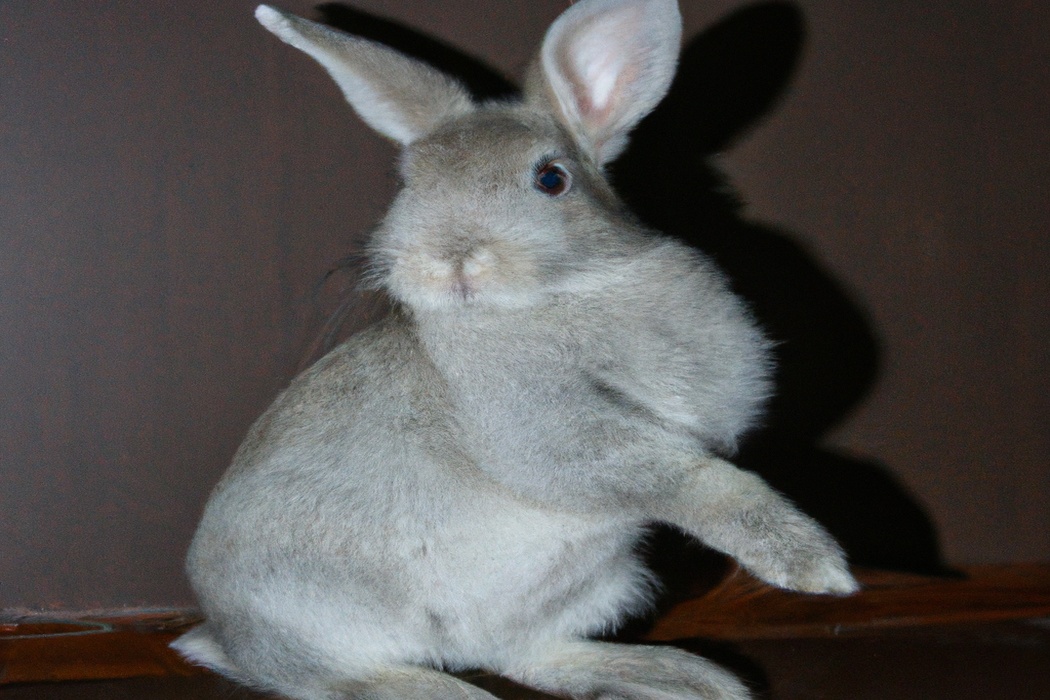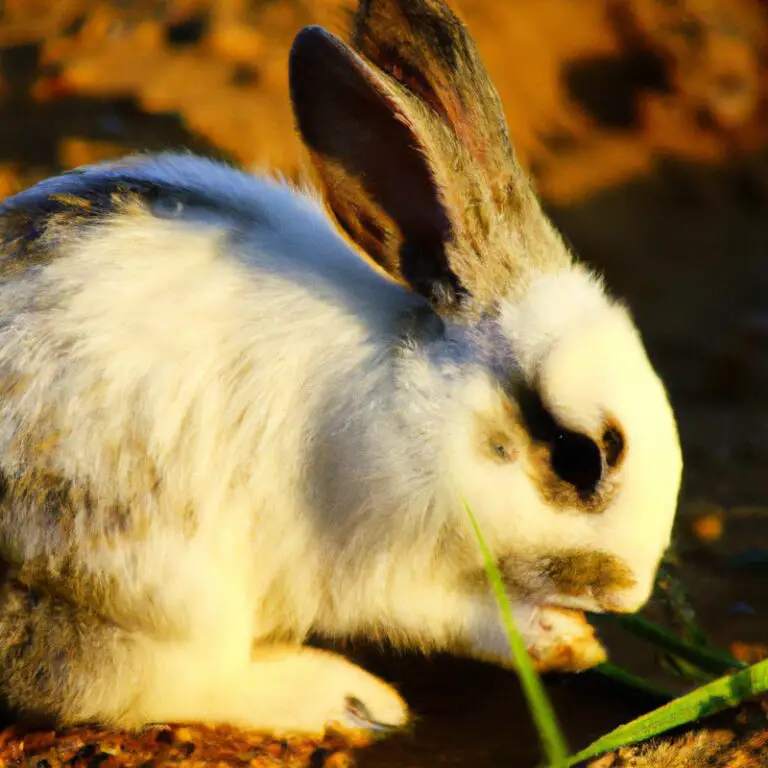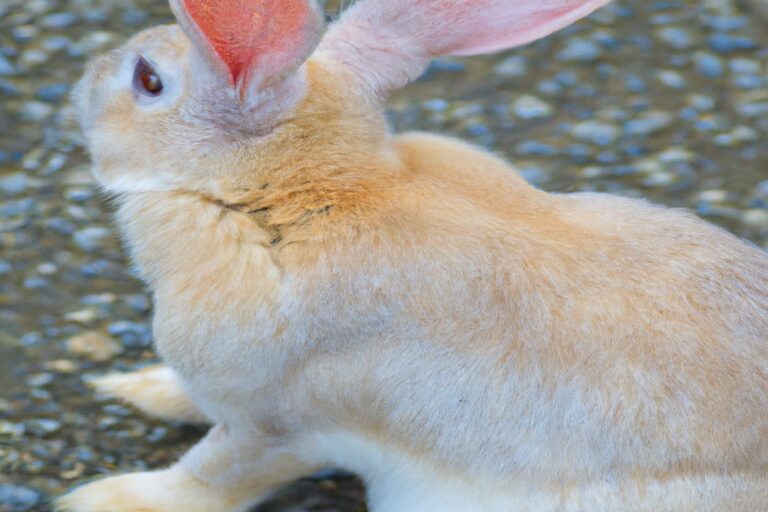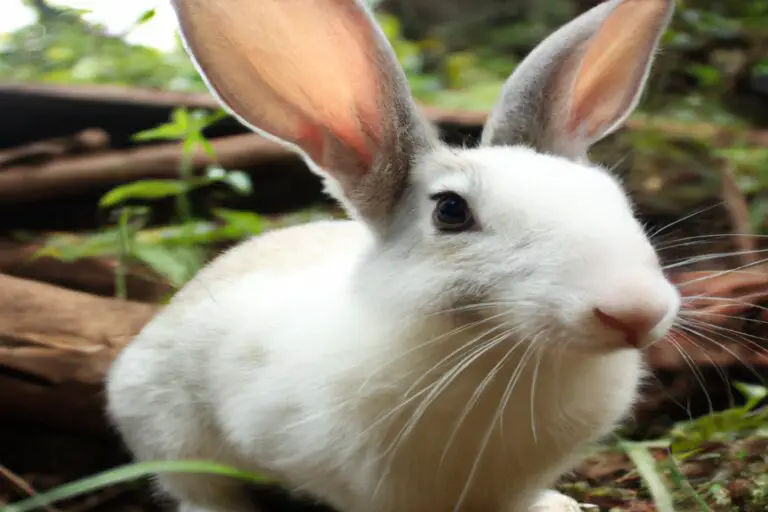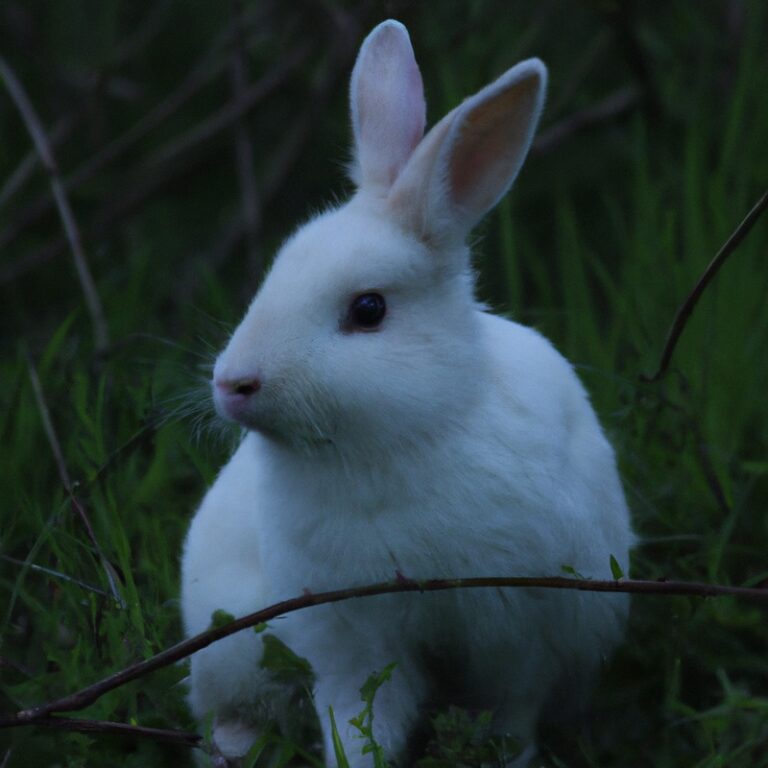Why Do Rabbits Jump Over Each Other? The Mysterious Tradition
Key Takeaways:
- Rabbits jump over each other as a form of social bonding and play.
- Jumping over each other helps rabbits establish dominance hierarchy within a group.
Ever wondered why rabbits have a tendency to leap over each other? It’s not because they’re aspiring high jump champions or auditioning for a circus act.
No, these little creatures have some fascinating reasons behind their jumping behavior.
In this article, we’ll dive into the intriguing world of rabbit behavior and explore the various factors that contribute to their acrobatic leaps. From sexual rituals to establishing dominance and even playful bonding, there’s a lot more to this behavior than meets the eye.
So, let’s hop right in and unravel the secrets of why rabbits jump over each other.
| Reason | Explanation |
| Rabbits are social animals | Rabbits are social creatures and jumping over each other is a form of play and social interaction. |
| Establishing hierarchy | Jumping over each other can be a way for rabbits to establish dominance within a group. |
| Excitement and exercise | Rabbits are naturally active and may jump over each other as a way to release energy and have fun. |
| Communication | Jumping over each other can be a form of communication among rabbits, signaling their intentions or emotions. |
| Mating behavior | Female rabbits may jump over males during mating as part of their courtship or breeding behavior. |
| Irritability or discomfort | In some cases, rabbits may jump over each other if they are feeling anxious, uncomfortable, or agitated. |
What is the Behavior of Rabbits Jumping Over Each Other?
Rabbits jumping over each other is a behavior commonly seen in social groups, often as a form of play or dominance display.
Typical behaviors of rabbits
Rabbits exhibit a range of typical behaviors. They are known for their hopping or jumping motion, as well as their ability to quickly change direction.
Rabbits also engage in grazing, eating a variety of plants and grasses.
They frequently groom themselves, using their tongues to keep their fur clean. Additionally, rabbits are social animals and may form bonds with other rabbits, engaging in activities such as grooming each other or snuggling together for warmth.
They also have a tendency to dig burrows in the ground for shelter and nesting.

Description of the jumping behavior
Rabbits often jump over each other as a form of play or to establish dominance. When they play, jumping can be a way for them to engage in friendly competition and have fun.
It’s their way of showing off their agility and athleticism.
On the other hand, when rabbits jump over each other to establish dominance, it is a display of hierarchy within their group. The higher-ranking rabbit will assert its dominance by jumping over the lower-ranking rabbit.
This behavior helps them establish boundaries and maintain social order within their group.
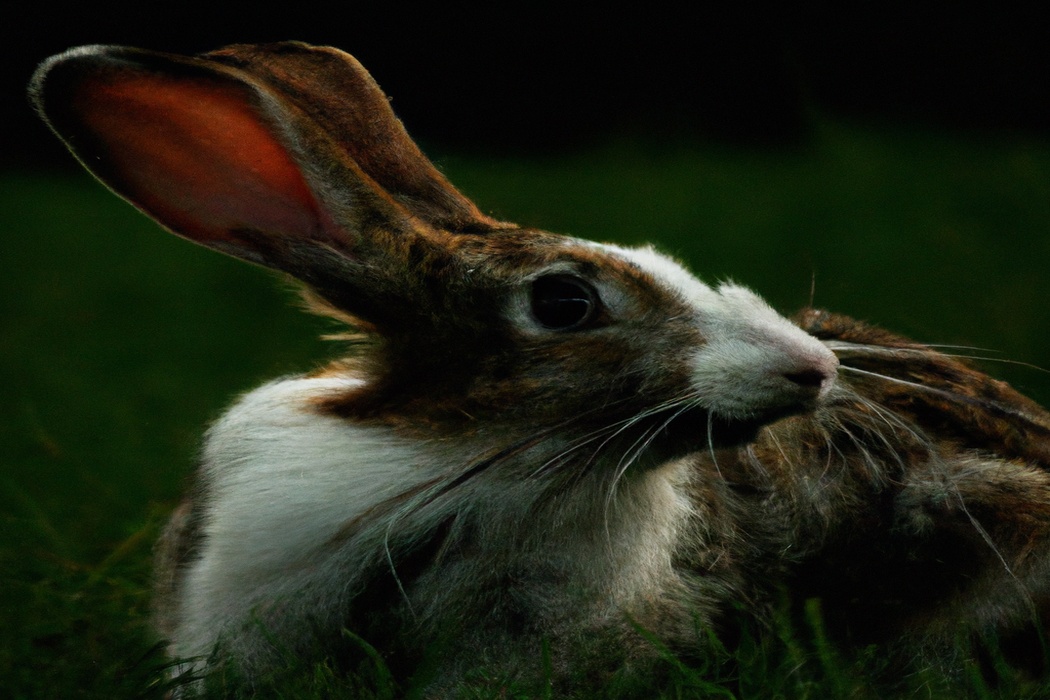
Why Do Rabbits Jump Over Each Other?
Rabbits may jump over each other due to their sexual behavior and mating rituals, establishing dominance and hierarchy, or engaging in playful behavior to strengthen social bonds.
Sexual behavior and mating rituals
Sexual behavior and mating rituals in rabbits are fascinating to observe.
When it’s time to mate, male rabbits often engage in a behavior called “mating dances”.
They will chase and leap over females, sometimes even twisting their bodies mid-air.
This behavior is thought to be a way for males to impress females and show off their agility and strength.
Once a female is ready to mate, she will respond by allowing the male to mount her.
These mating rituals ensure successful reproduction in the rabbit population.
Establishing dominance and hierarchy
Establishing dominance and hierarchy is a natural behavior among many animal species, including rabbits.
This behavior helps them maintain order within their social groups.
By engaging in behaviors like jumping over each other, rabbits are able to establish rank and determine who is the dominant individual.
This hierarchy is important for preventing conflicts and ensuring that resources, such as food and space, are distributed fairly.
Dominant rabbits usually have preferential access to these resources, while subordinate rabbits show deference and respect.
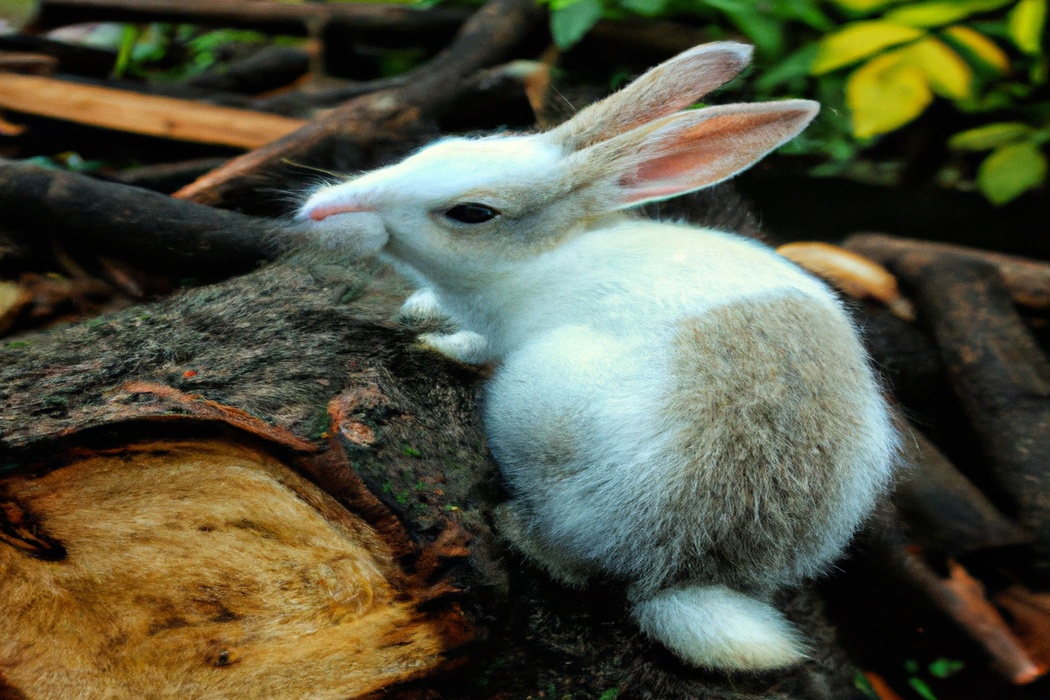
Playful behavior and social bonding
Rabbits engage in playful behaviors as a way to bond with each other socially. Through activities like jumping over each other, chasing, or hopping around, rabbits establish and strengthen their relationships.
Playfulness helps them build trust, communicate, and understand each other’s boundaries.
It’s a non-aggressive and fun way for rabbits to interact and create a positive social environment. So, when you see rabbits jumping over each other, know that it’s their way of fostering social bonds and enjoying each other’s company.
Factors Influencing Rabbit Jumping Behavior
The age and developmental stage of rabbits play a role in their jumping behavior, as do environmental factors and habitat. Additionally, the interactions rabbits have with other rabbits and animals can also influence their jumping behavior.
Age and developmental stage of rabbits
Age and developmental stage of rabbits play a significant role in their jumping behavior.
Young rabbits, especially those in their adolescence, are more energetic and tend to exhibit more jumping behavior compared to older rabbits.
As rabbits mature, their jumping behavior may decrease as they become less active.
Additionally, the developmental stage of rabbits can affect their coordination and jumping abilities.
Young rabbits may have more difficulty executing precise jumps compared to fully developed adult rabbits.
Therefore, considering the age and developmental stage of rabbits is essential when studying their jumping behavior.
Environmental factors and habitat
Environmental factors and habitat play a significant role in influencing rabbit jumping behavior.
The environment in which rabbits are kept can have an impact on their natural behaviors, including jumping.
Factors such as the size and layout of their enclosure, the presence of obstacles or structures to jump over, and the availability of space for exercise can all affect how often and how high rabbits jump.
Providing a spacious and stimulating environment with objects to jump over can encourage rabbits to engage in this natural behavior.
Additionally, providing a habitat that mimics their natural surroundings, with appropriate temperatures, lighting, and access to food and water, can also influence their jumping behavior.
Interaction with other rabbits and animals
When it comes to interaction with other rabbits and animals, it’s important to understand that rabbits are social creatures. They enjoy the company of their own kind and can form strong bonds with both rabbits and other animals.
When interacting with other rabbits, they may engage in behaviors like grooming each other, playing, or even hopping over each other.
This can be a sign of affection and a way to establish hierarchy within their group. When it comes to interacting with other animals, rabbits can be cautious at first.
It’s important to introduce them slowly and in a controlled environment.
Supervision is key to ensure the safety of both the rabbit and the other animal. Remember, every rabbit is unique and may have their own preferences when it comes to interaction.
It’s always best to observe their body language and ensure that they are comfortable and happy in their interactions with other rabbits and animals.
FAQ about Rabbit Jumping Behavior
Q: Is it normal for rabbits to jump over each other?
Yes, it is normal for rabbits to jump over each other. Rabbit jumping behavior is a natural and instinctual behavior for them.
It is a way for them to play, compete for dominance, or show off their agility.
Jumping over each other is a common form of interaction and socialization among rabbits. It is important to understand and respect their natural behaviors when caring for rabbits as pets.
Q: How can I tell if rabbits are playing or fighting?
When trying to tell if rabbits are playing or fighting, observe their body language. Playful rabbits will chase each other, hop around, and binky (jump and twist in the air) with relaxed postures.
They may also engage in gentle nipping or grooming.
On the other hand, fighting rabbits will display aggressive behavior like growling, lunging, biting, and thumping with tense body postures. It’s important to intervene if the interaction escalates to prevent injuries.
Q: Is there a specific reason for rabbits jumping behavior?
A: Yes, there is a specific reason for rabbits’ jumping behavior.
Rabbits are natural climbers and jumpers, which allows them to escape predators and explore their surroundings.
Jumping also helps them show dominance or initiate play with other rabbits.
Additionally, rabbits use jumping as a way to exercise and burn off excess energy.
So, if you see your pet rabbit jumping, it’s completely normal and just a part of their natural behavior.
Q: Can rabbits injure themselves while jumping?
Yes, rabbits can injure themselves while jumping.
Jumping requires a lot of force and agility, and if a rabbit is not careful or misjudges its landing, it can land awkwardly or fall, resulting in various types of injuries.
Common injuries include broken bones, sprains, and strains.
Additionally, rabbits can also hurt themselves if they hit objects or obstacles while jumping.
It’s important to provide a safe and spacious environment for rabbits to jump in to minimize the risk of injuries.
Regular veterinary check-ups are also recommended to ensure their overall health and well-being.
Final Verdict
Rabbits jumping over each other is a common behavior exhibited by these social and playful creatures.
It serves multiple purposes, including sexual behavior and mating rituals, establishing dominance and hierarchy, and promoting social bonding through play.
Several factors can influence their jumping behavior, such as age, environmental factors, and interaction with other rabbits and animals.
While it is generally normal for rabbits to engage in this behavior, it is important for owners to be able to differentiate between playful jumping and aggressive behavior.
Additionally, precautions should be taken to ensure the safety of the rabbits to prevent any potential injuries.
Understanding and appreciating the reasons behind this behavior can help rabbit owners better care for their furry companions.

